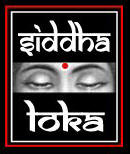|
|
A Summary Of

The Bhagavad-Gita, from the Sanskrit for The Song of the Lord, is a Sanskrit poem incorporated into the Mahabharata, one of the greatest religious classics of Sanatan Dharma, the Eternal Faith (Hinduism). The Gita (as it is often called) consists of a dialogue between Lord Krishna and Prince Arjuna on the eve of the great battle of Kurukshetra. Arjuna is overcome with anguish when he sees in the opposing army many of his kinsmen, teachers, and friends. Krishna persuades him to fight by instructing him in spiritual wisdom and the means of attaining union with God (see yoga). The main doctrines of the Gita are karma-yoga, the yoga of selfless action performed with inner detachment from its results; jnana-yoga, the yoga of knowledge and discrimination between the lower nature of man and his soul, which is identical with the supreme self; and bhakti yoga, the yoga of devotion. During this discourse in the midst of the battlefield, Lord Krishna reveals himself to Arjuna as the avatara (incarnation) of Vishnu, Lord of the Universe, or the preservative aspect Brahman (God). The Bhagavad-Gita is essentially Upanishadic in content, but it transcends the brahman-atman doctrine of the Upanishads in teaching that the ultimate relationship God is personal and that love and surrender to God's grace is a better and easier spiritual path than that of pure knowledge. This translation of the Bhagavad Gita is by Ramananda Prasad, Ph.D. of the American Gita Society, and one of the clearest translations I have come across.
This translation of The Bhagavad-Geeta Copyright 1988 by Dr. Ramanand Prasad - All Rights Reserved Reproduction in for-sale media is prohibited. American Gita Society, 511 Lowell Place, Fremont, CA 94536-1805 USA


